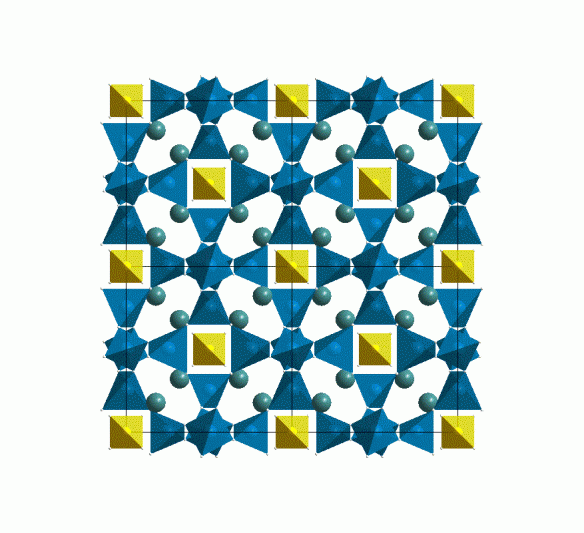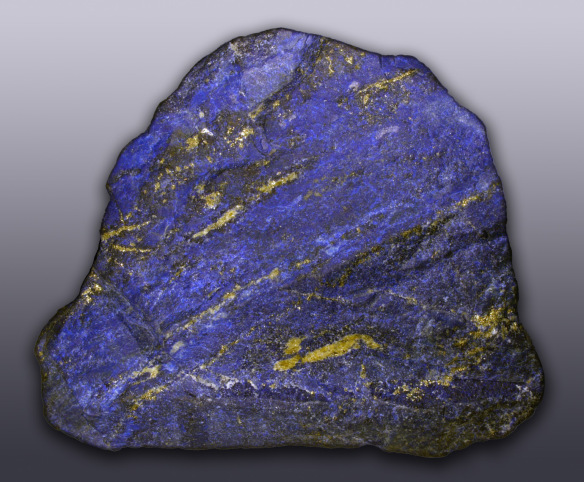September's birthstone: your choice, Sapphire or Lapis Lazuli
September is another month where you can choose a birthstone, either sapphire, the blue variant of corundum, or lapis lazuli. Indeed, from the classical era through to the Middle Ages lapis lazuli was often called sapphire, despite compositional difference, which is probably why they are both the birthstone for September. As Josie talked extensively about the Cr rich, red version, ruby, in July, I have chosen to go for the other choice for this month: Lapis Lazuli. In a change from the other birthstones we have looked at, Lapis Lazuli is a rock rather than a mineral. It is made up of several minerals and so the composition can vary depending on where you find it.
The main mineral constituents of Lapis Lazuli are: Lazurite (25 – 40%), and varying amounts of calcite, sodalite and pyrite, as well as many other possible minor minerals.
What does it look like?

Figure 1. Lazurite structure. Si/Al are blue, Na is green, S is yellow and O white. Picture made using Diamond crystal structure visualisation software.
What is it?

Figure 2. "Lapis-lazuli hg" by Hannes Grobe – Own work. Licensed under Creative Commons Attribution-Share Alike 2.5 via Wikimedia Commons – http://commons.wikimedia.org/wiki/File:Lapis-lazuli_hg.jpg
Lapis Lazuli has been used as a pigment for many centuries. The distinctive colour of Lapis Lazuli comes from the S-3 ion in Lazurite. It can be crushed to form the ultramarine pigment which Johannes Vermeer used in his famous painting "The girl with the pearl earring". It has been mined extensively in Afghanistan with the earliest mines dating back 6000 years. It was used to colour the eyebrows of Tutankhamun's funeral mask.
As mentioned above, the main mineral constituents of Lapis Lazuli are Lazurite (25 – 40%) and varying amounts of calcite, sodalite and pyrite. Most of the intense blue colour of Lapis Lazuli comes from the presence of Lazurite. Lazurite, shown in the structure picture, is a felspathoid mineral. Feldspathoids are tectosilicates – they contain frameworks of silica tetrahedra. They are called felspathoids because they resemble feldspars but have a different structure. The structure above shows the silica framework. Aluminium can substitute for Si in this framework and Ca and Mg also often share or replace Na in the structure.
Where did the structure come from?
This structure was determined by Hassan, Peterson and Grundy in 1985. It is available from the American Mineralogist Crystal Structure Database and the paper is this one:
Hassan, I., Peterson, R. C., Grundy, H. D. Acta Crystallographica C41 (1985) 827-832. The structure of lazurite, ideally Na6Ca2(Al6Si6O24)S2, a member of the sodalite group.






